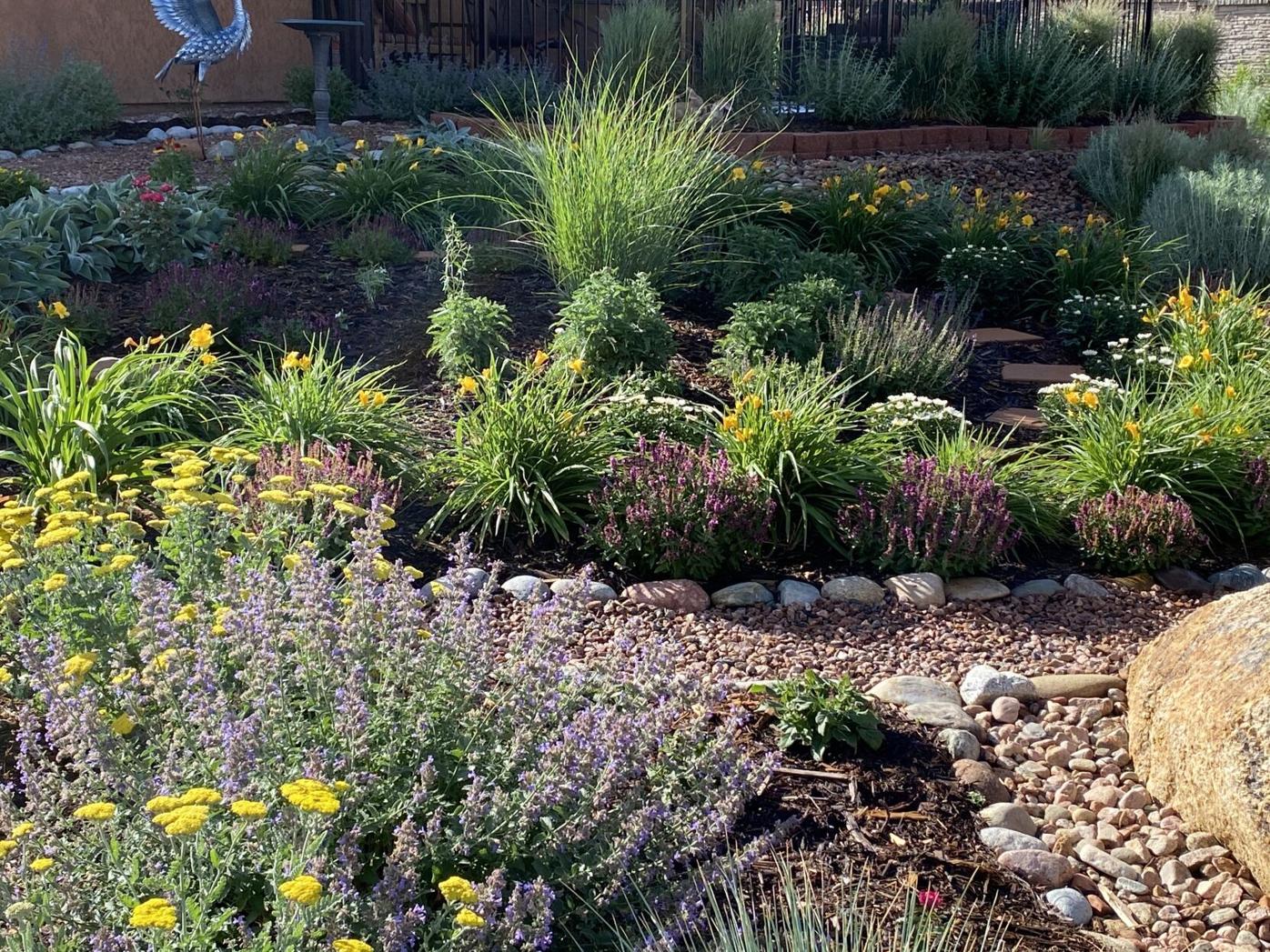Year-Round Gardening: How to design your own perennial garden
The idea of designing your own perennial garden might seem daunting. But it doesn’t have to be. If you can’t fathom tackling a large area, start small and expand next year.
Begin by laying out the shape and hardscape elements. Curvy lines are most pleasing. Put down garden hoses to define your lines and move them around until you’re pleased with the look from all angles. Pathways and stepping-stones that meander through a large bed make for easy access to plants and add visual interest. Address drainage issues with retaining walls, river rock, French drains and berms. Designate spots for accent features such as boulders, a birdbath and a garden bench.
Once the hardscape is in, turn your attention to the soil. Most of the region’s soils benefit from amendment with organic compost. To determine soil content and get an interpretation of the results, send a sample to the Colorado State University soil testing laboratory. Test kits are available at the El Paso County Extension office, 17 N. Spruce St. After amending soil, top dress with an organic mulch 3 to 4 inches thick.
Now you can begin plant selection. All should be rated for cold hardiness zone 5 or lower and have sun requirements compatible with your site. Incorporate plants of varied shapes, sizes, textures, colors and bloom time. Visit local demonstration gardens and study library books on perennials. Two excellent internet resources are waterwiseplants.org and plantselect.org. Decide what plants, color combinations and compositions you like. Make a list of all the plants you think you’d like to have in your garden, noting their mature size and cultural requirements.
With plant list in hand, lay out a planting plan using landscape flags to represent each plant. Use a different color flag for small, medium, tall and accent plants. Begin with low-growing border plants along perimeters and pathways and graduate to medium height and then taller plants toward the back of a bed. Group plants together with similar water needs. Drifts or mass plantings of the same plant make a striking effect. Place plants of same variety in groups of three, five, or seven to increase impact of color or texture.
Repeating the same plants in different spots will give the garden continuity. Use tall ornamental grasses for dramatic vertical accents. Move or rearrange your plants to your liking. Space plants (flags) based on their mature size.





